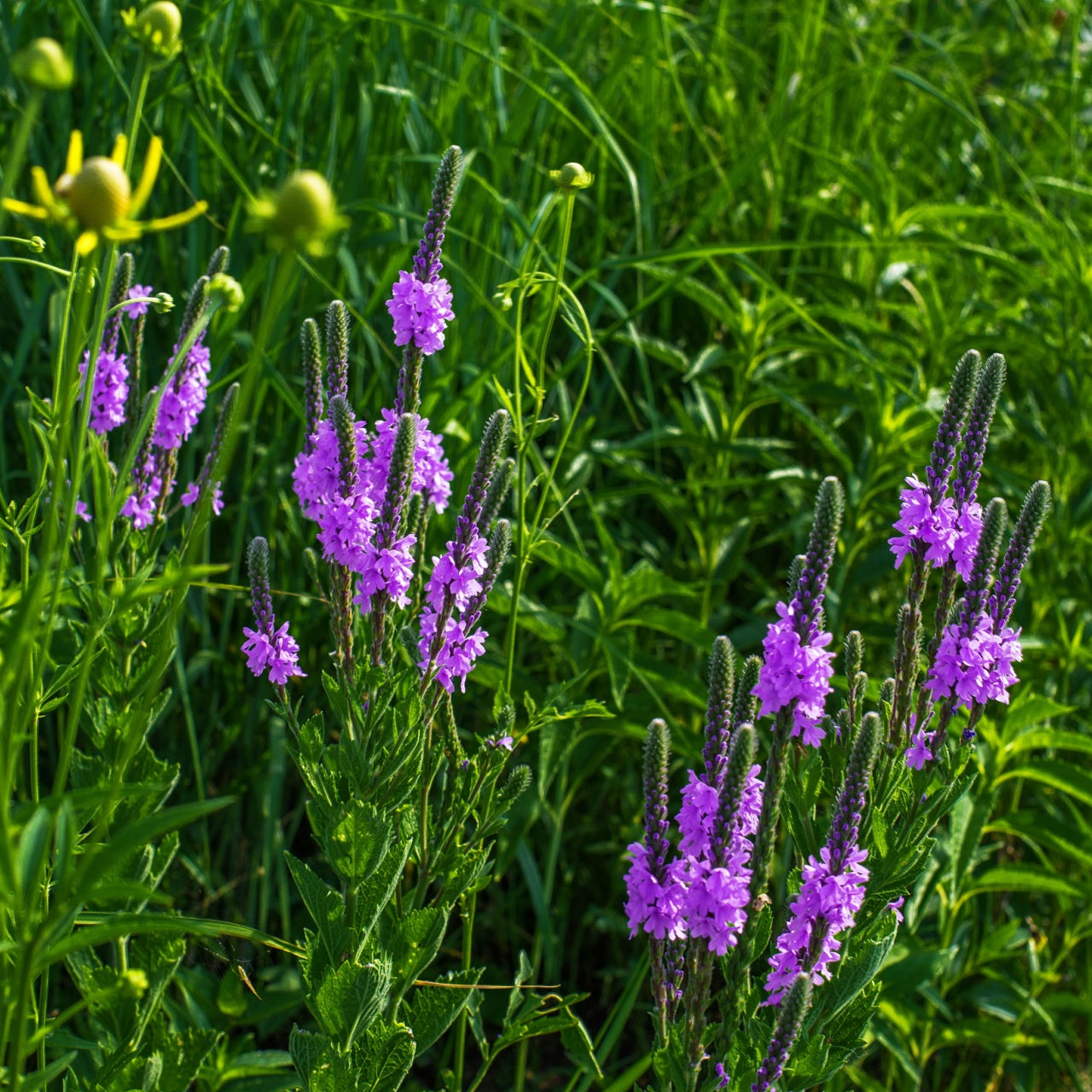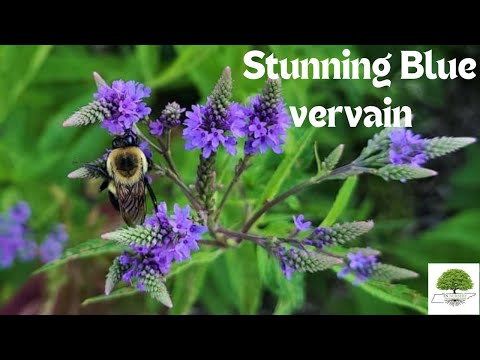Blue Vervain Plant For Sale
Blue Vervain, Verbena hastata, is so special because of the perennial's color palette. While the flowers are delightfully violet-purple, the stem from which the spears and flowers emerge embodies deep red to pink hues, providing a subtle accent color component to the garden.
Growing to a height of up to 4 ft, this vervain plant is ideal for the back border of a moist garden bed, where it can receive full sun but also not shade the other plants growing nearby. Once established, this plant will form colonies and provide more densely packed flowering spears for visual pleasure.
The inflorescences of this plant are shaped like the head of a spear, which is denoted in the epithet “hastasta,” which means “spear-shaped” in Latin. These spears are grouped in panicles at the top of each stem. Each spear produces dozens of endearingly tiny, five-lobed flowers that are violet to purple in color.
Verbena hastata Plant Facts
Family: Verbenaceae
Hardiness Zones: 3–9
Light Requirement: Full sun to partial shade
Water Needs: Moderate to wet
Height: 2 to 6 ft
Spread: 12 to 8 in
Growth Rate: Moderate
Bloom Time: July to September
Flower Color: Blue-violet
Wildlife Value: Attractive to pollinators, and the seeds provide food for small mammals
The flowers of the Blue Vervain are attractive to pollinators and hummingbirds in a garden. The seeds are a common food source for small mammals and are important in supporting wildlife in natural and landscaped ecosystems.
How to Grow
Blue Vervain prefers moist to wet soils and full sun to partial shade. It easily self-seeds and spreads via rhizome; however, it is not aggressive and will not outcompete other companions in the garden. Blue vervain plant is low-maintenance with no pest or disease problems. Given its inclination for wet feet, it is ideal as a border element or can be used in a rain garden.
Why Gardeners Love Verbena Hastata
Attractive to pollinators, seeds provide a food source for wildlife and are low-maintenance.
Add this charmingly tall, spear-shaped perennial to your rain garden and enjoy the unfurling of thousands of tiny violet-purple flowers year after year. Shop for Blue Vervain plants online at TN Nursery. For 68 years, we have served the landscaping industry and homeowners with specimen plants.

Exposure
Blue Vervain thrives in full sun to partial shade. It prefers at least 4-6 hours of direct sunlight daily but can tolerate some light afternoon shade, especially in hotter climates. It enjoys well-drained, moist soil.
Height at Maturity
Over 12"
Usage
Pollinator Plant
Shipped As
Bare-root
Ships
USPS
Planting Zones
3-9





